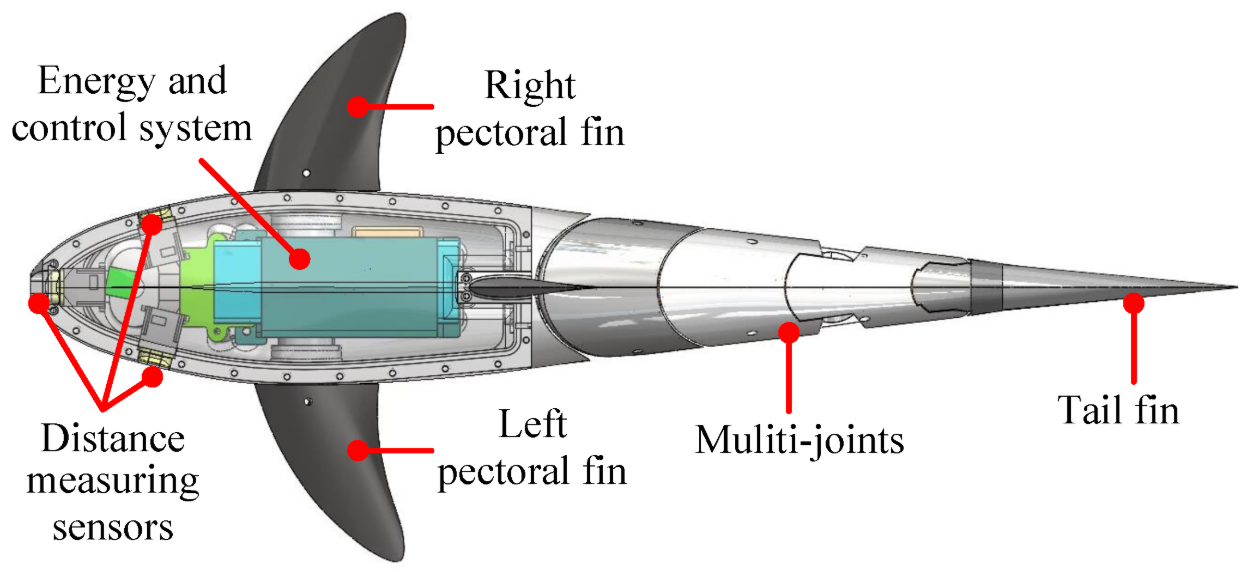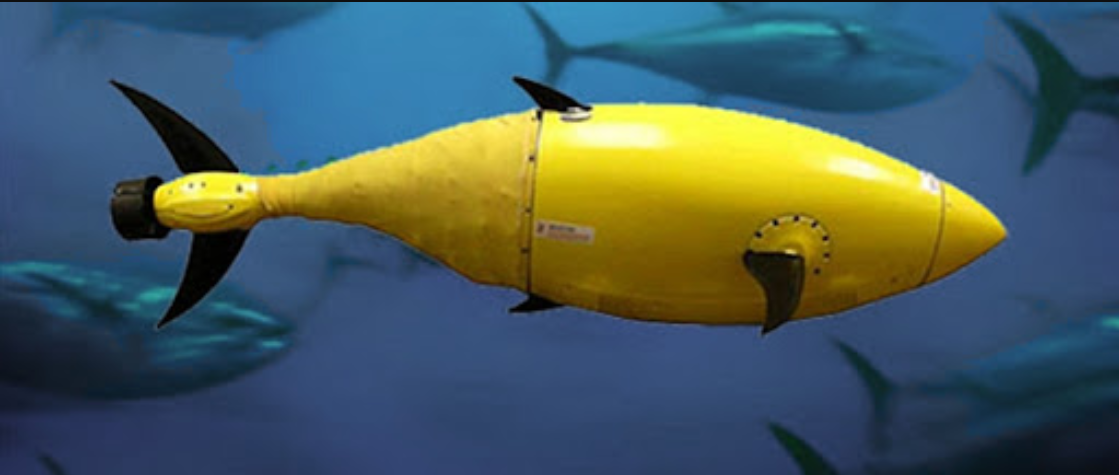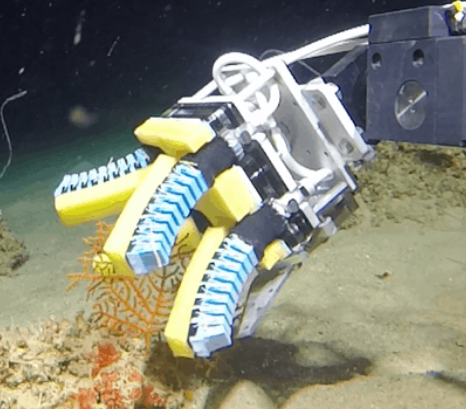The ocean remains Earth's final frontier, with more than 80% of it still unexplored. As we push the boundaries of marine discovery, scientists are turning to nature's own designs for inspiration. Biomimetic Underwater Robots represent a revolutionary approach to underwater exploration, mimicking the elegant movements and efficient designs of marine creatures. These remarkable machines combine cutting-edge robotics with biological principles to navigate challenging aquatic environments with unprecedented agility and energy efficiency. From robotic fish that monitor coral reefs to octopus-inspired manipulators for delicate underwater operations, this article dives deep into how nature's blueprints are transforming underwater robotics.
What Are Biomimetic Underwater Robots?

Biomimetic Underwater Robots are robotic systems designed to imitate the biological mechanisms, movement patterns, and physical characteristics of aquatic organisms. Unlike traditional boxy submersibles, these robots replicate the streamlined forms and propulsion methods found in nature, offering significant advantages in maneuverability, energy efficiency, and environmental interaction. The field of biomimetic robotics draws from marine biology, mechanical engineering, materials science, and artificial intelligence to create machines that can perform tasks ranging from environmental monitoring to underwater infrastructure inspection with remarkable biological fidelity.
Unveiling the Deep: What Are The Underwater Robot Types Transforming Ocean Exploration?
Key Advantages Over Conventional Underwater Vehicles
Traditional remotely operated vehicles (ROVs) and autonomous underwater vehicles (AUVs) face limitations in maneuverability and energy consumption. Biomimetic Underwater Robots solve these challenges through their biological inspiration. Fish-like robots can achieve energy savings of up to 40% compared to propeller-driven systems by utilizing undulating body motions. Octopus-inspired robots can squeeze through tight spaces impossible for rigid machines. Manta ray replicas can glide effortlessly for extended periods, making them ideal for long-duration monitoring missions. These advantages make biomimetic designs particularly valuable for delicate marine research where minimizing disturbance to ecosystems is crucial.
Breakthrough Examples of Biomimetic Underwater Robots
1. Robotic Fish: The Silent Observers
Leading research institutions have developed robotic fish that perfectly mimic the swimming patterns of their biological counterparts. Harvard's "Bluebot" features a soft robotic design that schools with real fish to study marine behavior without disruption. These robots use artificial lateral lines—sensors that detect water movement—just like real fish, allowing them to navigate complex currents and avoid obstacles autonomously. Applications include coral reef monitoring, pollution detection, and studying fish migration patterns in their natural habitats.
2. Octopus-Inspired Soft Robots
The octopus represents nature's masterpiece of underwater manipulation, with its boneless body and incredible dexterity. Biomimetic Underwater Robots based on octopus physiology feature soft, flexible arms capable of delicate operations like collecting fragile biological samples or performing underwater repairs. The European OCTOPUS Project has developed robotic arms that can bend, twist, and grip with precision while maintaining a gentle touch—perfect for interacting with sensitive marine environments or handling archaeological artifacts.
3. Manta Ray Drones for Long-Range Missions
Manta rays have inspired some of the most energy-efficient underwater robots. These large, wing-like robots use oscillatory movements to propel themselves with minimal energy expenditure. The U.S. Navy's "Manta Ray" prototype can operate autonomously for months, carrying sensors to monitor vast ocean areas. Their bio-inspired design allows them to rest on ocean currents like real rays, conserving energy between active missions. Such capabilities make them invaluable for climate research, military surveillance, and search operations over extended periods.
Underwater Robots: Exploring the Depths Beyond Human Limits
The Science Behind the Biomimicry

Creating effective Biomimetic Underwater Robots requires deep interdisciplinary collaboration. Biologists study marine creatures' movements using high-speed cameras and motion tracking. Engineers then replicate these movements using advanced materials like shape-memory alloys and electroactive polymers that can mimic muscle contractions. Fluid dynamics experts optimize the designs for maximum hydrodynamic efficiency. Recent breakthroughs in soft robotics have been particularly transformative, allowing for the creation of machines that can change shape and stiffness like biological organisms, enabling unprecedented adaptability in underwater environments.
Materials Revolutionizing Biomimetic Designs
The development of novel materials has been crucial for advancing Biomimetic Underwater Robots. Self-healing polymers allow robots to repair minor damage during missions—just like living tissue. Hydrogel skins can change color and texture for camouflage or communication. Electroactive polymers contract when electrically stimulated, mimicking muscle fibers. These material innovations enable robots to interact with marine environments in ways that were previously impossible, opening new frontiers in underwater exploration and research.
Future Applications and Challenges
The potential applications for Biomimetic Underwater Robots are vast and growing. Environmental monitoring represents one of the most promising areas, with robotic fish being deployed to track pollution levels, monitor endangered species, and assess coral reef health. In the industrial sector, octopus-inspired robots could maintain underwater pipelines and offshore wind farms with minimal environmental impact. The military sees potential for stealthy surveillance platforms that blend into marine environments. However, challenges remain in improving energy storage, developing more robust bio-inspired sensors, and creating control systems that can match the cognitive abilities of marine animals.
Ethical Considerations in Biomimetic Robotics
As Biomimetic Underwater Robots become more lifelike, ethical questions emerge. Should robotic fish be allowed to interact freely with wild populations? Could these robots potentially disrupt natural behaviors or ecosystems? The scientific community is developing guidelines to ensure these technologies are used responsibly. Some researchers propose equipping biomimetic robots with identifiers to prevent confusion with real animals, while others advocate for strict limitations on their use in sensitive habitats until more is known about their potential impacts.
FAQs About Biomimetic Underwater Robots
How do Biomimetic Underwater Robots differ from traditional submarines?
Unlike conventional submarines that rely on propellers and rigid hulls, Biomimetic Underwater Robots use biological-inspired movement mechanisms like undulating fins or jet propulsion. They're typically more maneuverable, energy-efficient, and capable of operating in shallower waters while causing minimal disturbance to marine life.
Can Biomimetic Underwater Robots completely replace human divers?
While they excel in dangerous or repetitive tasks, current Biomimetic Underwater Robots can't fully replace human divers' adaptability and decision-making. They're best used as complementary tools—handling tasks that are too risky, time-consuming, or delicate for humans while allowing divers to focus on more complex operations.
What's the biggest technical challenge in developing these robots?
The greatest challenge lies in creating energy systems that match marine animals' efficiency. While biological organisms can extract energy from their environment (through feeding), robots still rely on limited battery power. Researchers are exploring biofuel cells, underwater charging stations, and even artificial symbiosis with marine organisms as potential solutions.
The Next Wave of Innovation
The field of Biomimetic Underwater Robots is advancing at an extraordinary pace. Emerging technologies like artificial intelligence and advanced materials science promise to create even more sophisticated biological mimics. Some researchers are working on robots that can evolve their swimming patterns through machine learning, while others are developing hybrid systems that combine biological components with mechanical structures. As these technologies mature, we may see robotic marine creatures that are virtually indistinguishable from their biological counterparts—opening new possibilities for ocean exploration, conservation, and our understanding of marine life itself.


